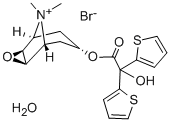Clothianidin
Synonym(s):(E)-1-(2-Chloro-5-thiazolylmethyl)-3-methyl-2-nitroguanidine
- CAS NO.:210880-92-5
- Empirical Formula: C6H8ClN5O2S
- Molecular Weight: 249.67
- MDL number: MFCD06200753
- EINECS: 433-460-1
- SAFETY DATA SHEET (SDS)
- Update Date: 2025-01-27 09:38:02

What is Clothianidin?
Description
Clothianidin is a neonicotinoid insecticide that was developed jointly by Takeda Chemical Industries and Bayer. Neonicotinoids were developed to replace nicotine, which is an effective insecticide but degrades too rapidly to be practical for large-scale use. Neonicotinoids also replaced older pesticides that were harmful to humans and other mammals.
Recently, the use of neonicotinoids has been criticized because they are toxic to nontarget insects, especially honeybees. In 2013, the European Union (EU) issued a 2-year ban on clothianidin,?thiamexotham, and other neonicotinoids on crops that attract bees. But the US Environmental Protection Agency ruled that the data used by the EU were inconclusive, and it did not ban neonicotinoids.
Later in 2013, a study conducted by F. Pennacchio and co-workers at the University of Naples Federico II?established links between clothianidin exposure and two bee disorders: colony collapse disorder and deformed wing virus. This finding may lead to additional restrictions on the agricultural use of neonicotinoids.
The Uses of Clothianidin
Insecticide.
What are the applications of Application
Clothianidin is a neonicotinoid insecticide
Definition
ChEBI: (E)-clothianidin is a clothiadin that has E configuration at the C=N bond of the nitroguanidine moiety. It has a role as a neonicotinoid insectide.
Flammability and Explosibility
Not classified
Properties of Clothianidin
| Melting point: | 178.8 °C |
| Boiling point: | 412.5±55.0 °C(Predicted) |
| Density | 1.61 |
| vapor pressure | 0Pa at 25℃ |
| storage temp. | 0-6°C |
| solubility | DMF: 30 mg/ml; DMSO: 30 mg/ml; DMSO:PBS (pH 7.2) (1:1): 0.50 mg/ml |
| form | neat |
| pka | 2.76±0.50(Predicted) |
| Water Solubility | 327 mg/L at 20 ºC |
| CAS DataBase Reference | 210880-92-5 |
| EPA Substance Registry System | Clothianidin (210880-92-5) |
Safety information for Clothianidin
| Signal word | Warning |
| Pictogram(s) |
 Exclamation Mark Irritant GHS07  Environment GHS09 |
| GHS Hazard Statements |
H302:Acute toxicity,oral H410:Hazardous to the aquatic environment, long-term hazard |
| Precautionary Statement Codes |
P273:Avoid release to the environment. |
Computed Descriptors for Clothianidin
| InChIKey | PGOOBECODWQEAB-UHFFFAOYSA-N |
New Products
1-Boc-4-cyanopiperidine tert-Butyl carbazate 1-(TERT-BUTOXYCARBONYL)-2-PYRROLIDINONE TETRABUTYLAMMONIUM CYANIDE TETRAHYDRO-2H-PYRAN-3-OL 3-Pyridineacrylic acid Nickel(II) perchlorate hexahydrate, 98% 4-Bromophenylacetonitrile, 95% 3-Bromo-4-fluoroaniline, 97% Sodium tetraborate decahydrate, 98% Palladium(II) acetate, trimer, Pd 99% 4-Bromo-2-chlorotoluene, 97% Tadalafil Clopidogrel bisulfate Sitagliptin Phosphate Monohydrate Cabergoline Fexofinadine HCl Etoricoxib 4-Amino Acetophenone 2-Chloro Acetophenone Amlodipine Base 2,3,5-Triiodobenzoic Acid Pyrrolidine Diiodo PentoxideRelated products of tetrahydrofuran








You may like
-
 Clothianidin 95.00% CAS 210880-92-5View Details
Clothianidin 95.00% CAS 210880-92-5View Details
210880-92-5 -
 Clothianidin 98% (HPLC) CAS 210880-92-5View Details
Clothianidin 98% (HPLC) CAS 210880-92-5View Details
210880-92-5 -
 Clothianidin CAS 210880-92-5View Details
Clothianidin CAS 210880-92-5View Details
210880-92-5 -
 Clothianidin CAS 210880-92-5View Details
Clothianidin CAS 210880-92-5View Details
210880-92-5 -
 366789-02-8 Riveroxaban 98%View Details
366789-02-8 Riveroxaban 98%View Details
366789-02-8 -
 Carvedilol 98%View Details
Carvedilol 98%View Details
72956-09-3 -
 73590-58-6 Omeprazole 98%View Details
73590-58-6 Omeprazole 98%View Details
73590-58-6 -
 Sertraline HCl 98%View Details
Sertraline HCl 98%View Details
79559-97-0
